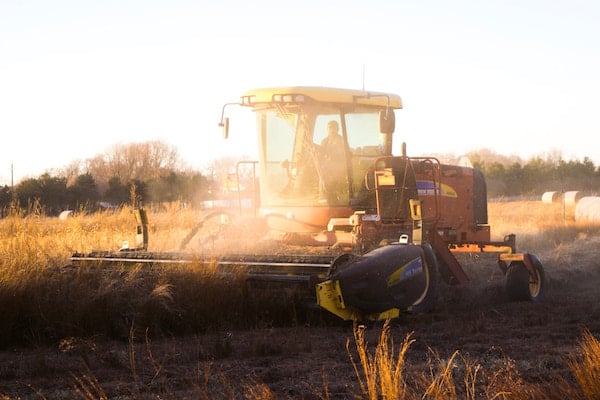Published on
Are Universities Suited to Run Successful Apprenticeship Programs? Absolutely!

In this interview, Tracy Kittilsen and Rosaria Campbell discuss the opportunities and challenges of the PEI Farm Technician Apprenticeship Program and share their thoughts on the many reasons why this unique apprenticeship model is well suited to a university setting.
The EvoLLLution (Evo): Why are universities well suited to run apprenticeship programs?
Rosaria Campbell (RC): Universities live at the cutting edge of research and innovation, and as industries change and automation replaces jobs in industries across the country, workforce education will need to shift its focus to higher-level skills like data analysis and information use. Apprenticeship programs will need to evolve to meet the demand for higher-skilled jobs, and universities are the right place to help them with this.
Tracy Kittilsen (TK): Universities are often ahead of the curve, and industry often looks to universities for the latest in technology, research and innovation. By working in partnership with these industries, we can position apprentices ahead of industry change and prepare them for what the workforce offers.
RC: Universities have specialized expertise in a variety of fields that can benefit from apprenticeships, such as agriculture, engineering and landscaping. Our faculty, instructors and adjunct professors can bring subject-matter expertise and strong industry ties, both of which are critically important to successful apprenticeship programs.
We also have Extension or Continuing Education units that are able to extend the expertise of our departmental faculties, and state-of-the-art teaching and research facilities. This combination of assets is extremely fitting for adult learners seeking to grow through apprenticeships.
Evo: What does it take to launch a university-run apprenticeship program?
RC: Fundamentally, you need people with the drive and vision to make the program work. Apprenticeship programs in Canada involve a number of stakeholders: the training institution, the industry group, the apprenticeship agency, the employer, and the learner. We’ve leveraged strong partnerships with all of these stakeholders to ensure the training part works for everyone.
Apprenticeship programs are roughly 85 percent on-the-job learning, so industry buy-in, from employers with strong mentors that want to make the program work for their employees, is critical.
In Canada, apprenticeships are administered by provincial apprenticeship agencies, so we needed to work closely with the provincial agency too.
The university administration and faculty have to be squarely behind the initiative. They have to see the value in the program and help to support it. We were fortunate that this was the case. We had excellent support from all levels in the faculty. Without this we would not have been able to do it.
Of course, an apprenticeship program needs to focus on adult learners. Apprenticeship programs are grounded in Competency-Based Education and Training (CBET), which means you have to have a solid CBET-focused process and CBET expertise. This isn’t necessarily an intuitive approach in universities, because they generally run on a subject-based model.
Evo: The apprenticeship model takes a very different approach to program delivery than most traditional university offerings, even within continuing education departments. How does a great learning experience for apprenticeship students differ from what learners are looking for in more traditional programs?
TK: One of the things that contributes to a good learning experience, especially in a new program where there might not be an existing trade, is that the university, industry and apprenticeship partners are creative in finding training solutions. In a traditional apprenticeship, a student is taught by a qualified journey-person who has gone through the program and knows what’s expected. In the PEI scenario, the apprenticeship agency had to revise this approach because there were no qualified journey-people in PEI to mentor the students. Instead, the apprenticeship agency certified the farm employers to serve as mentors. That was an innovative solution, and it has proven successful.
Students are looking for a positive learning experience. The on-farm mentors have to be willing to provide relevant work experience outside the classroom and allow students to integrate classroom learning into their jobs.
The program has to give room for students to build peer relationships among themselves. Peer-to-peer learning is important: It allows students to see different perspectives from different workplaces.
Apprenticeship training challenges students to grow beyond their current level of experience, which means there’s a higher level of trust needed for them to get the most out of the program. These students are coming from the workforce: we need to recognize, value and build on the experience that our learners bring to the table. How we help them develop those existing skills is very important.
Finally, apprenticeship students require a lot of support. These are adult learners who may need access to childcare, transportation, even literacy classes. You need to have appropriate support services to help them succeed, and this has been accomplished by the good work of our industry partner.
RC: The success of our program ultimately hinges on the learners themselves. The quality of our students is critical to the student experience, which is true of any program, but it was particularly important in our case because this was a brand-new program. It took a lot of guts for students to take a chance on it. Having people who were willing to give this program a try, and committed to making it work, was important.
TK: The partnership element was also critical. Our program is run off-site—in another province. As a result, a lot of student support came from our industry partners, who were able to leverage local resources to help enhance the student experience. For example, some apprentices are adult learners who haven’t completed high school. Our industry partner has worked with local services in PEI to help our apprentices attain their GED.
Evo: How do you ensure that students understand what’s expected of them, especially given that offerings are tailored to individual students and their prior knowledge?
TK: There is constant communication with our students all along the chain of progression in the program. Often, this communication starts with initial contact and recruitment from the industry partner, and then continues with the apprenticeship agency, which outlines the logistics of apprenticeship training. From there, it’s Extended Learning’s role to communicate the expectations of the in-class training element of the program. There’s a clear identification of roles at every stage of the apprenticeship process, which ensures that learners understand what’s expected of them.
It starts with the industry partner, who connects students with employers and promotes the program to local agricultural businesses. That industry partner has information sessions on individual farms to introduce employers and potential students to the program, and tell them what they can expect.
Once that happens, the student becomes a registered apprentice with the apprenticeship agency. The apprenticeship agency has an important role to play in communicating expectations, because an apprenticeship is a contractual obligation between the apprentice and the employer. The agency issues each apprentice with a skills logbook that identifies which skills are to be developed in the workplace and which will be developed in the classroom, how many hours are required in the trade, and what the exam requirements are.
Once they become a registered apprentice—they’re working in the trade, in their job—the next step is the in-class training with Extended Learning. Here, we tell them what the curriculum will be, how many learning hours will take place in the classroom, and what to expect.
RC: The skills logbook is a critical component of the apprenticeship program, and they’re signed off by the mentor throughout the process as students develop relevant skills. In the classroom component, we complement and supplement what the student is learning on the farm through theoretical knowledge.
Evo: What does it take to deliver a high-quality experience, both in terms of the program offerings and in terms of the student experience, through this unique apprenticeship model?
RC: Apprenticeship programs are all about the workplace, so you need up-to-date facilities that are relevant to a changing workplace. The farms we partner with need to be at the cutting edge, in terms of their facilities and expertise. The mentors have to know what they’re doing and provide up-to-date equipment for students to use. In the classroom, we regularly review our material to make sure that we’re keeping up with industry advancements.
The partnership element is also important. Apprenticeship programs are a collaborative effort. Learning institutions, industry groups, apprenticeship agencies, mentors and learners all have their parts to play, and it takes adequate funding to support the program.
TK: Faculty champions are important as well. We’ve been lucky to have faculty from the very beginning that saw the value in this program and brought their high-level academic and industry knowledge to the program.
Evo: You mentioned that the apprenticeship program involves 85 percent fieldwork and 15 percent in-classroom learning. How do you balance this scheduled formal learning with the flexibility required to respond to student needs?
TK: We align our training schedule with industry needs. For example, January and February tend to be the slowest months for agriculture, so we time our in-class training to take place at the start of the calendar year.
Second, it’s critical to build learner supports into the program structure. A lot of our students have been out of school for a long time, and a lot of the support we provide comes down to reassuring them that they can succeed in adult-focused education. We like to tell them that apprenticeships aren’t all “chalk and talk.” It can be a hurdle to get learners into the program, but once they’re there and realize they can apply the lessons they’re learning to their home farm or place of employment, it makes it a very worthwhile experience.
Evo: What advice would you share with university administrators who may be considering launching apprenticeship offerings at their own institutions?
TK: Be brave. Apprenticeships are an alternative model, but they’re very rewarding, and they offer a great way for universities to engage in their industry communities. They provide access to different market segments, which is important because universities are looking for new student groups to engage with.
RC: Apprenticeships are a well-established and proven model. They deliver effective training and certify high-quality employees.
TK: I’ve been the program manager of this initiative for a long time, and I’ve seen its success first-hand. I’ve seen people succeed where they thought they couldn’t. This program takes a job that hasn’t always been viewed in the best light and not only validates it, but for those students it also creates pride in their work. It validates their jobs and their worth and their contribution to the agricultural economy. These students are so proud to be involved in the program, as are all of our industry partners.
RC: My advice to administrators would be to leverage those partnerships. Don’t be afraid to work with industry partners, apprenticeship agencies, and the apprentices themselves. They have expertise that we can use in universities.
My second piece of advice would be to trust the CBET (Competency-Based Education and Training) process. It really works. We’ve struggled within the university to apply that model in some of our other programs because it isn’t intuitive, but it really works.
This interview has been edited for length and clarity.
Author Perspective: Administrator


